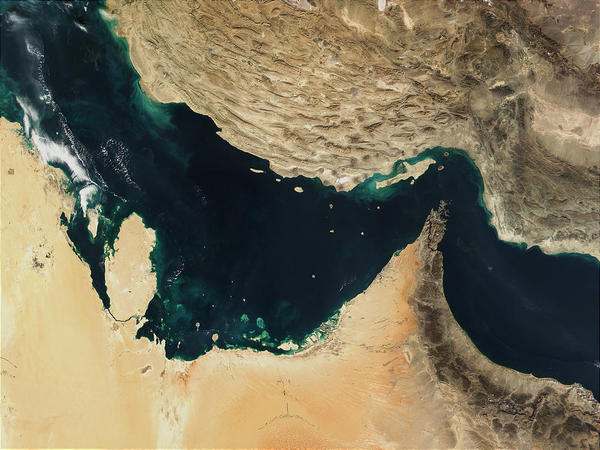Paradise Lost: the original Gulfies
A fascinating paper by British anthropologist Jeffery Rose suggests that, about 8,000 years ago, what we know as the Persian or Arab Gulf was home was above water and inhabited. A kind of Middle Eastern Atlantis, if you will, where an original Gulfie civilization prospered away from the deserts.
Veiled beneath the Persian Gulf, a once-fertile landmass may have supported some of the earliest humans outside Africa some 75,000 to 100,000 years ago, a new review of research suggests.
At its peak, the floodplain now below the Gulf would have been about the size of Great Britain, and then shrank as water began to flood the area. Then, about 8,000 years ago, the land would have been swallowed up by the Indian Ocean, the review scientist said.
There are a lot of important consequences for our knowledge of the history of human evolution and history:
"Given the presence of Neanderthal communities in the upper reaches of the Tigris and Euphrates River, as well as in the eastern Mediterranean region, this may very well have been the contact zone between moderns and Neanderthals," Rose told LiveScience. In fact, recent evidence from the sequencing of the Neanderthal genome suggests interbreeding, meaning we are part caveman.
The Gulf Oasis would have been a shallow inland basin exposed from about 75,000 years ago until 8,000 years ago, forming the southern tip of the Fertile Crescent, according to historical sea-level records.
And it would have been an ideal refuge from the harsh deserts surrounding it, with fresh water supplied by the Tigris, Euphrates, Karun and Wadi Baton Rivers, as well as by upwelling springs, Rose said. And during the last ice age when conditions were at their driest, this basin would've been at its largest.
In fact, in recent years, archaeologists have turned up evidence of a wave of human settlements along the shores of the Gulf dating to about 7,500 years ago.
"Where before there had been but a handful of scattered hunting camps, suddenly, over 60 new archaeological sites appear virtually overnight," Rose said. "These settlements boast well-built, permanent stone houses, long-distance trade networks, elaborately decorated pottery, domesticated animals, and even evidence for one of the oldest boats in the world."
Rather than quickly evolving settlements, Rose thinks precursor populations did exist but have remained hidden beneath the Gulf. [History's Most Overlooked Mysteries]
"Perhaps it is no coincidence that the founding of such remarkably well developed communities along the shoreline corresponds with the flooding of the Persian Gulf basin around 8,000 years ago," Rose said. "These new colonists may have come from the heart of the Gulf, displaced by rising water levels that plunged the once fertile landscape beneath the waters of the Indian Ocean."
And of course it makes a certain mythological flood story seem much more likely:
And there's a hint of mythology here, too, Rose pointed out. "Nearly every civilization living in southern Mesopotamia has told some form of the flood myth. While the names might change, the content and structure are consistent from 2,500 B.C. to the Genesis account to the Qur'anic version," Rose said.
Perhaps evidence beneath the Gulf? "If it looks like a duck, and quacks like a duck, we have at least to consider the possibility that we have a small aquatic bird of the family Anatidae on our hands," said Rose, quoting Douglas Adams.

